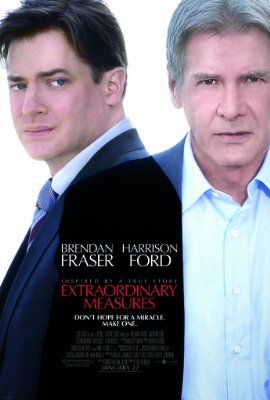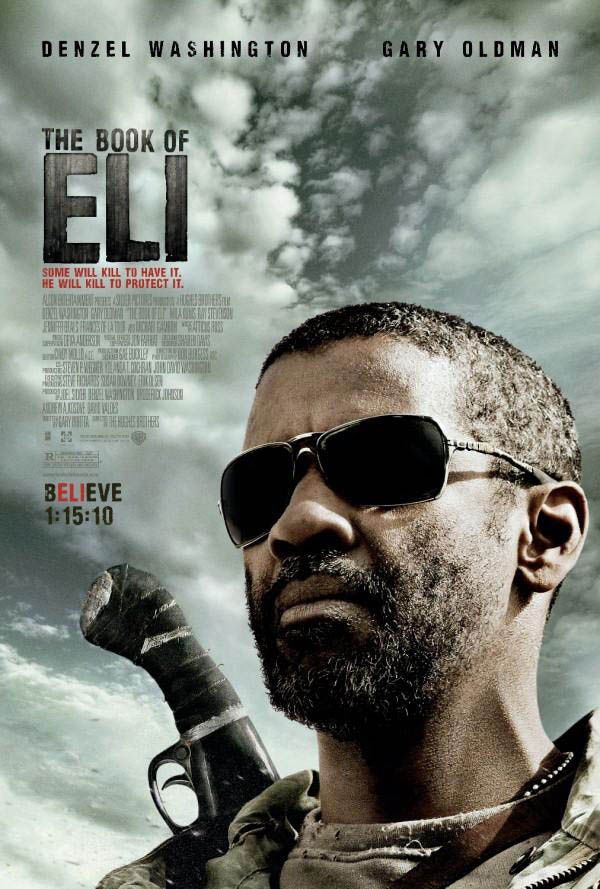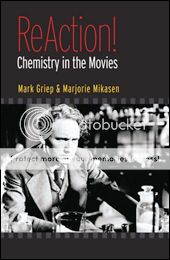REVIEW: Extraordinary Measures
Jan2
A Father’s Love and a Scientist’s Dedication in a Race against Time

Extraordinary Measures film poster ©2010 CBS Films, all rights reserved
Imagine this scenario: you are a young married professional, a rising star in a well-respected pharmaceutical company. You have three children, two of which suffer from a rare, inherited genetic disease for which there is no cure. They will die in about a year or two. What do you do? Inspired by the book The Cure: How a Father Raised $100 Million – and Bucked the Medical Establishment – In a Quest to Save His Children by Pulitzer Prize-winning journalist Geeta Anand, Extraordinary Measures is a drama about the real-life story of John Crowley (Brendan Fraser) and Dr. Robert Stonehill (Harrison Ford) as they work feverishly to find a cure for the disease afflicting Crowley’s children. The dramatic caveat is that said cure is based solely on a scientific theory. CBS Films’ motion picture debut touches on a myriad of salient modern-day issues, including personal morality, risk taking, scientific funding, pharmaceutical business practices, the dedication to science, professional relationships, and a man’s love for his family. For the full ScriptPhD.com review, please click “continue reading”.
REVIEW: The Book of Eli (Bleak Chic with a Christian Twist)
Jan1

The Book of Eli film poster ©2010 Warner Brothers Pictures, all rights reserved.
Picture this: a mysterious Man with No Name comes into a tiny desert town that’s dominated by a manipulative and powerful bossman. He has something the bossman wants and won’t give it up – and No Name is an almost supernaturally powerful fighter; you really don’t want to mess with him. Before the battle between Good and Evil is over, the Man with No Name has decimated the bossman’s thug-army and brought the evil leader low, the dusty little settlement is either burned to the ground or better off than before he arrived, and off he goes, continuing his mysterious journey – always in motion, never at peace. Except for a tie-‘em-up ending that’s tacked on to the back of The Book of Eli, that’s pretty much what you’ve got here: a post-apocalyptic tale of the mysterious hero vs. the bully prince, just like an old Sergio Leone/Clint Eastwood spaghetti western. Just replace Eastwood with Denzel Washington, replace the Old West with the near future after a global catastrophe, cast a painfully over-the-top Gary Oldman as the Bad Boss, give newcomer Mila Kunis the inevitable pretty girl/spunky sidekick role, and you’re golden. Or at least should have been. Unfortunately for the viewing audience, there’s more Sergio Leone than Cormac McCarthy in this ponderous and unconvincing post-apocalyptic allegory. For a full review, please click “continue reading”.
GUEST POST: On Chemistry, Movies and Making Science Entertaining
Jan2

Reaction! Chemistry in the Movies is an Oxford University Press title. ©2009, all rights reserved.
One of my favorite movies as a kid, and now, as a professional scientist, is Andromeda Strain. The heroes are mostly older, professorial types who work feverishly to understand an alien organism and save the planet. After being asked to review ReAction! Chemistry in the Movies for ScriptPhD.com, I was so curious to consume (with relish) the book’s guesswork about the chemistry found in Andromeda Strain. After returning to the beginning of the book and giving it a read, I was thrilled to find that ReAction! is a detailed, thoughtful exploration of the representation of chemistry in film. The book addresses, first and foremost, the fact that chemistry can play a lead role in film. The authors also discuss the dichotomy between the “dark” and “bright” sides of chemistry (and science) as illustrated by films in which chemistry or chemists play a central role. Also included are several playful explorations of the real science behind some famous examples of fictional chemistry in film. After the break is a full review of the book along with an in-depth interview with authors Mark Griep and Majorie Mikasen on the process of working together as chemist and artist, portrayal of chemists in film and how film can change public perception in science.

















